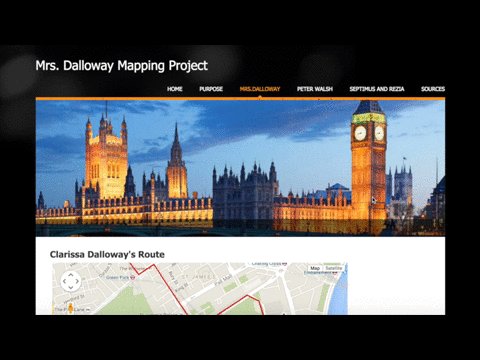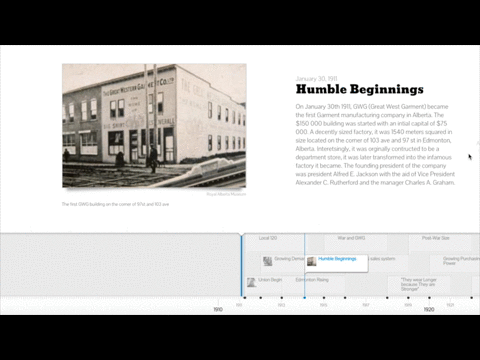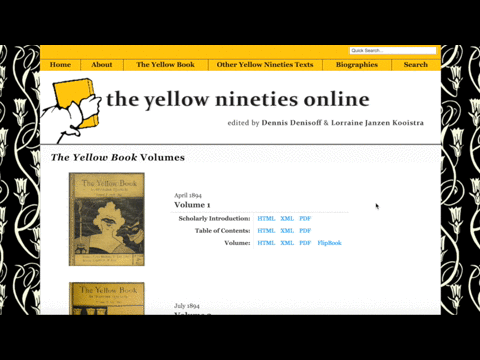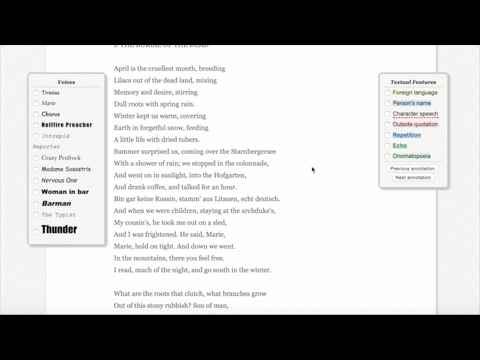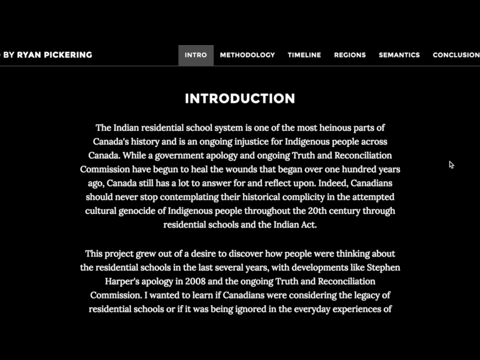How Did They Make
That
For Undergraduate Projects
by Tiffany Chan
?
This post is based on Miriam Posner's original "How Did They Make That?" and the video. Like its inspiration, this post introduces Digital Humanities newcomers to a range of projects and what tools or technical knowledge they might need to know to make them. This list is not exhaustive.
This post is also intended for undergraduates, using example projects done by undergraduates or involved undergraduate work and/or collaboration.
What it is
What you'd need
Get started
Alternatives
A 3D reconstruction of an 1813 portraiture exhibit attended by Jane Austen.
- Modellers also use Maya, Rhino, Blender
-
Video game software
- CRYENGINE for "Off The Map"
- Minecraft for "Hullcraft"
Janine Barchas (faculty), Michelle Lawrence-Carlin, Megha Vaidya, Nick Kinnaird, Katie Tiller et al. (students)
University of Texas at Austin
Undergrad collaboration through Undergrad Research Apprenticeship and LAITS Student Technology Assistants programs
What it is
What you'd need
Get started
Alternatives
Exhibit-archive of oral history interviews, images, newspaper articles and other primary sources about the Great Migration.
- Omeka.org , but you can also use Omeka.net (full comparison)
- Optional: HTML, CSS coding to customize how the site displays
I've used WordPress.org for a virtual exhibit before but I'd still recommend Omeka.
Jannecken Smucker and Charles Hardy (faculty), Robert Bennett, Kristine Geiger, William Hostmann, et al. (students)
West Chester University
Collaborative effort between two classes of undergraduate and graduate students.
What it is
What you'd need
Get started
Get fancy
A project that maps each character's walking route in Mrs. Dalloway, along with brief descriptions and analyses of significant events during those walks.
- Neatline (used with Omeka)
- ArcGIS (e.g. Michael DeGroot's project)
Adam Erwood, London Lamb, Jasmine Perrett, Anjaly Poruthoor, and Manoj Vangala
Georgia Institute of Technology
Collaborative project by students in Dr. Kathryn Crowther's "Literary London" course
What it is
What you'd need
Get started
Get fancy
A timeline chronicling the history of Edmonton's Great Western Garment Company (later a plant).
- Timeglider for more control over how the timeline's points display
- Combine the timeline with a map using Timemap.js
Dylan Blake
University of Alberta
Assignment done for Nicholas Van Orden's 1st Year English course
What it is
What you'd need
Get started
A digital archive of The Yellow Book, related 19th-century periodicals, and a wealth of contextual material (biographies, reviews, etc.)
- TEI: markup language for scholarly editing
- XSLT or XML publication system: I like the uber-lightweight TEI Boilerplate
- Introduction to the practice of markup
- TEI by example
- A TEI editor: oXygen is popular; try others
Dennis Denisoff & Lorraine Janzen Kooistra (principal editors), plus a great deal more collaborators and research assistants
Ryerson University, Toronto
CDH-sponsored undergraduate internship
Alternatives
Not the proper way to do it, but Scalar can do in a pinch depending on what you want.
What it is
What you'd need
Get started
A multi-linear, multimodal history (1970-2000) of LGBT experiences at Bryn Mawr College that includes interviews, photographs, and documents.
- Scalar—multimedia authoring platform
- Optional: web coding (HTML, CSS, JavaScript) for customization
Brenna Levitin
Bryn Mawr College, Pennsylvania
What it is
What you'd need
Get started
An analysis of different voices in The Waste Land using a custom algorithm, among other techniques.
A custom algorithm adapted from existing plagiarism detection and text segmentation techniques.
There are many kinds of textual analysis. It's easy to start with Voyant Tools (no coding required): see documentation and tutorials.
Brook, Hammond, Hirst, and the class of ENG287 "The Digital Text"
University of Toronto
Undergraduate class collaboration with instructors
Get fancy
What it is
What you'd need
Get started
An analysis of (Canadian) Google search trends for "residential schools"—who is searching and why?
- Google Trends
- To publish: Github Pages, Start Bootstrap
- Intro to Visualization from UCLA's DH101
- Tools to try:
- Network analysis using Gephi:
Ryan Pickering
Carleton University, Ottawa
Assignment for "Crafting Digital History" (#hist3907b), taught by Shawn Graham


